What Do People Wear In Mexico, especially for LGBTQ+ travelers seeking vibrant experiences? At gaymexico.net, we’ve compiled a guide focusing on comfort, cultural respect, and suitability for various climates, ensuring an unforgettable and authentic trip. Discover stylish travel tips and LGBTQ+ fashion insights for your Mexican adventure.
1. Understanding Mexican Dress Culture
There are no strict rules about what you must wear when visiting Mexico, but understanding the local culture can greatly enhance your experience. While Mexico City and other large urban centers are becoming increasingly cosmopolitan and stylish, mirroring trends in cities like Los Angeles and New York, more conservative dress is typically observed, especially in rural areas. Tolerance is widespread, particularly towards tourists, but respecting local customs is always a good idea.
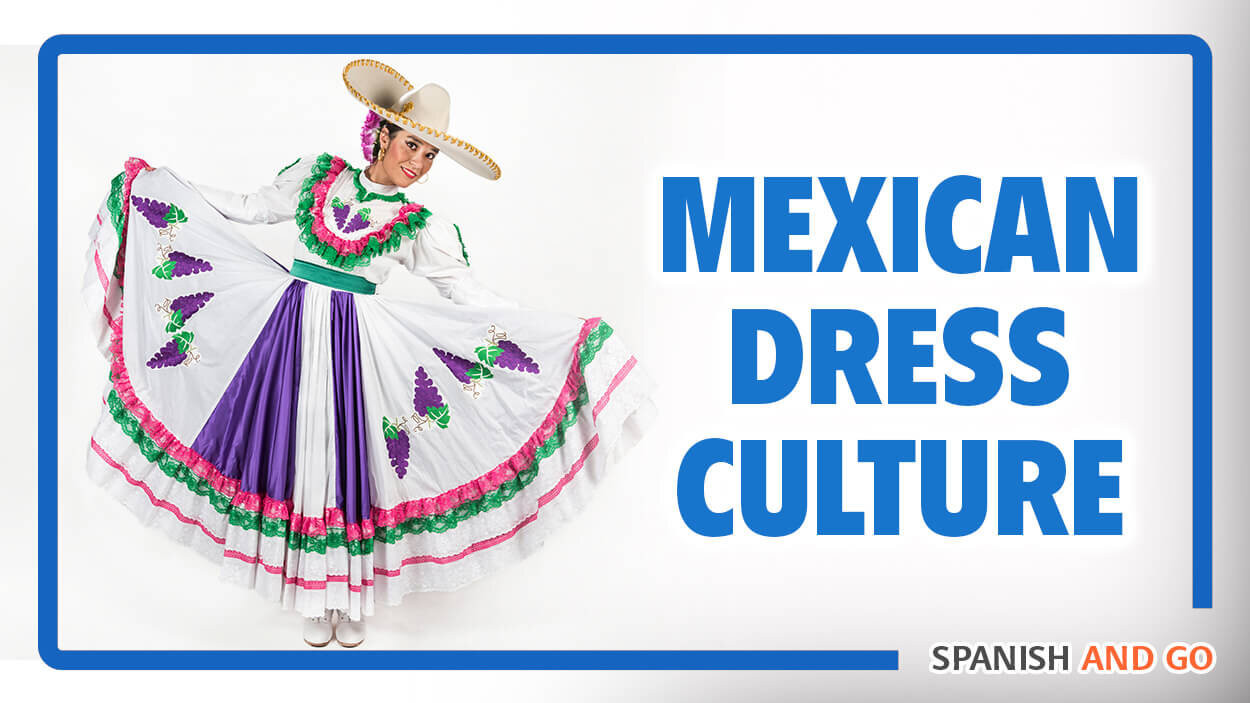 Traditional dresses in Mexico are colorful and crafted beautifully. Reminiscent of an earlier time.
Traditional dresses in Mexico are colorful and crafted beautifully. Reminiscent of an earlier time.
What Mexicans wear and what is comfortable for travels throughout the country is the basis for the information we share. Although it’s true that many Mexican women don’t often wear shorts, it’s acceptable if they make you feel comfortable.
Keep in mind that specific dress codes may apply at certain venues such as religious sites, upscale restaurants, bars, and special events.
2. Decoding What to Wear by Destination
2.1. Cancun and the Riviera Maya: Beach Town Essentials
From November through February, the weather in beach destinations in Mexico is very pleasant. The average daily high temperatures around the Riviera Maya are around 83ºF, with average lows around 68ºF.
The coastal hot season lasts from April through September. Temperatures average above 88ºF and drop to as low as 70ºF.
Puerto Vallarta and Los Cabos have similar temperatures.
The Riviera Maya has a wet season that lasts from May to early November, with September being the wettest. Hurricanes are most likely to occur in August, September, and October.
Riviera Maya Weather Averages (ºF)
| Month | High | Low |
|---|---|---|
| January | 82 | 68 |
| February | 83 | 69 |
| March | 84 | 70 |
| April | 86 | 72 |
| May | 88 | 74 |
| June | 89 | 76 |
| July | 89 | 75 |
| August | 89 | 75 |
| September | 87 | 74 |
| October | 85 | 73 |
| November | 83 | 71 |
| December | 82 | 69 |
Source: NOAA
2.2. Beach Vacation Packing List
- Sandals: A must-have for any beach trip, comfortable walking sandals are perfect for the beach and short walks.
- Sneakers: A necessity for excursions to ruins, jungle treks, or museum visits, offering essential foot support.
- Shorts: Ideal for warm weather, Bermuda shorts made of synthetic fabrics (polyester, spandex, nylon, and rayon blends) are recommended for moisture-wicking and comfort. Jim favors cotton shorts in a slim fit, versatile for dressing up or down.
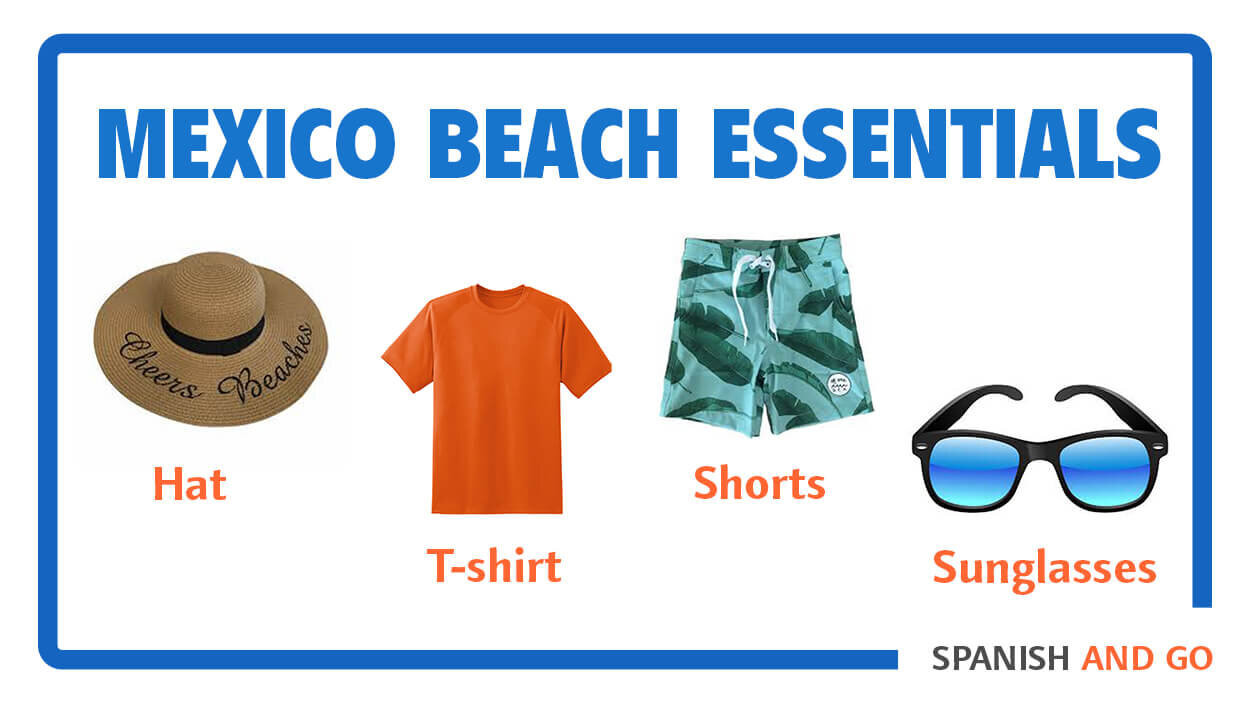 Summertime is beach time, and Mexico can get very, very hot. So make sure to pack the essentials.
Summertime is beach time, and Mexico can get very, very hot. So make sure to pack the essentials.
- T-shirts: Versatile and comfortable, cotton or cotton blend t-shirts are great for keeping cool in hot weather.
- Long-Sleeve Shirts: Provides sun protection, with lightweight linen options being a favorite.
- Cool and Loose Items: Cotton dresses or lightweight linen pants are breathable options perfect for hot and humid conditions.
- Sweater, Jacket, or Pashmina: Essential for cooler mornings and evenings, or air-conditioned places.
- UVA/UVB Protection: Always bring sunglasses and a hat for sun protection. A light rain jacket is also useful during the rainy season.
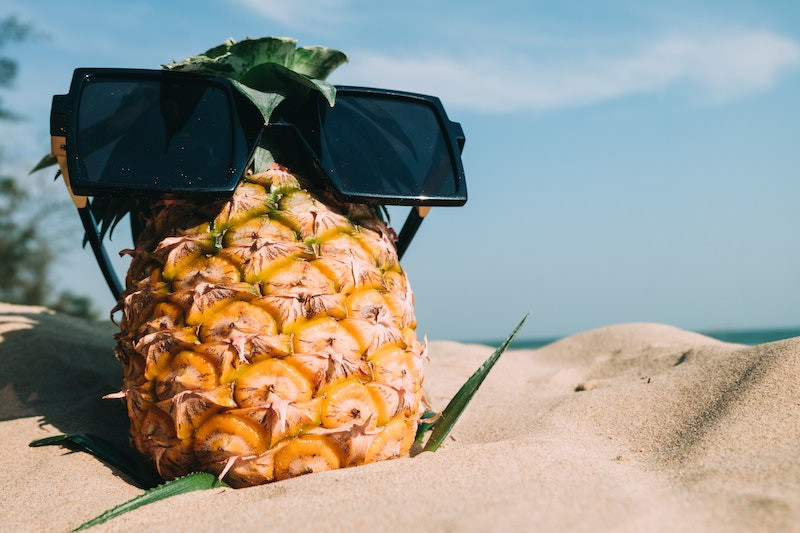 pineapple-sunglasses.jpg
pineapple-sunglasses.jpg
3. Dressing for Central Mexico’s Climate
3.1. Weather Patterns in Central Mexico
Central Mexico can get very cold during the fall and winter. Temperatures change during the day, but mornings and evenings are often between the 40s and 70s (ºF) from November to February.
During the warm season (April-June) temperatures are often around the 70s and 80s (ºF).
The wet season in Central Mexico starts at the end of May and continues through the beginning of October. Expect lots of rain in July and August in cities around Mexico City and Guanajuato.
3.2. Average Temperatures in Mexico City (ºF)
| Month | High | Low |
|---|---|---|
| January | 66 | 43 |
| February | 68 | 45 |
| March | 73 | 48 |
| April | 77 | 52 |
| May | 79 | 55 |
| June | 75 | 55 |
| July | 73 | 54 |
| August | 73 | 54 |
| September | 72 | 53 |
| October | 70 | 50 |
| November | 68 | 47 |
| December | 66 | 44 |
Source: NOAA
3.3. Packing for Mexico City, Querétaro, & Puebla
Due to higher altitude, Mexico City and other Central Mexican destinations can get colder than you might expect. When visiting cities in Central Mexico, keep the following essentials in mind:
- Sneakers or comfortable closed-toe shoes: Essential for all-day walking in variable weather conditions.
- Jeans, pants, and leggings: A staple in Mexican daily wear, suitable for casual occasions and blending in with the locals.
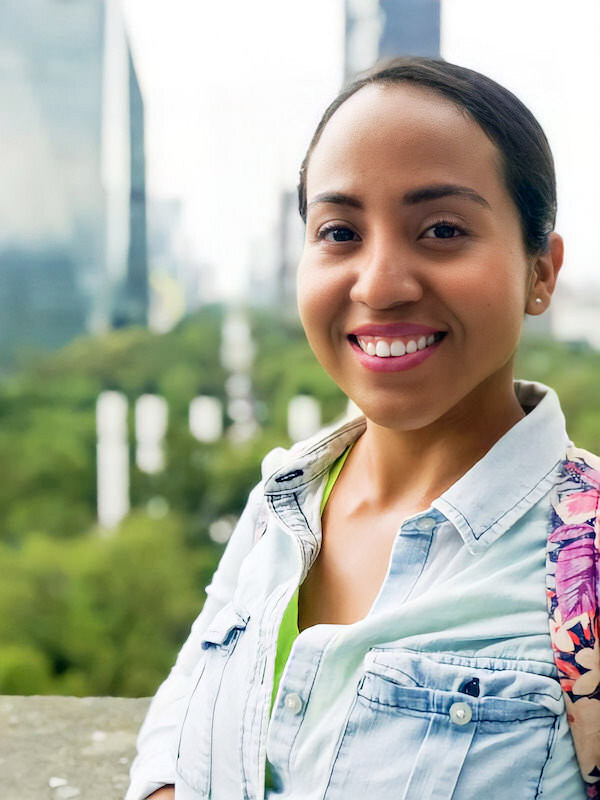 May wearing a jean jacket in Mexico City in July
May wearing a jean jacket in Mexico City in July
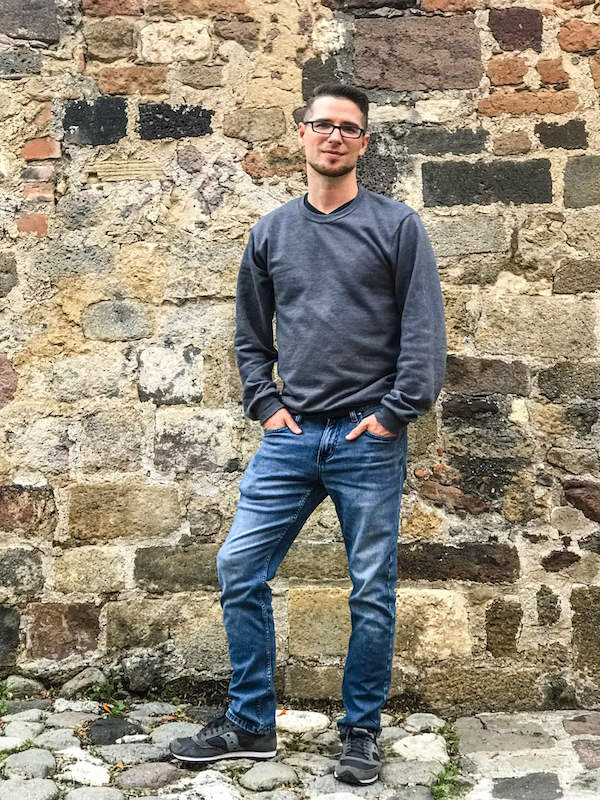 Jim wearing a sweatshirt and jeans in Tlaxcala, Mexico in July
Jim wearing a sweatshirt and jeans in Tlaxcala, Mexico in July
- Bermuda or cargo shorts: Comfortable for warmer months and daytime exploration.
- Simple t-shirts: Adaptable for any look, comfy, and a good look for anyone.
- Long sleeve shirts: Protects from the sun; choose material based on the season.
- Casual dresses: Nice to wear during the summer and when you explore at night.
- Sweaters, hoodies, and jackets: Necessities for winter visits, as temperatures can fluctuate significantly. Dressing in layers is essential.
- Scarf, hat, mittens: Useful for higher altitudes or colder evenings.
4. Top Three Tips for Smart Packing
- Tip 1: Pack ONLY the essentials.
- Tip 2: Rolling instead of folding.
- Tip 3: Use packing cubes.
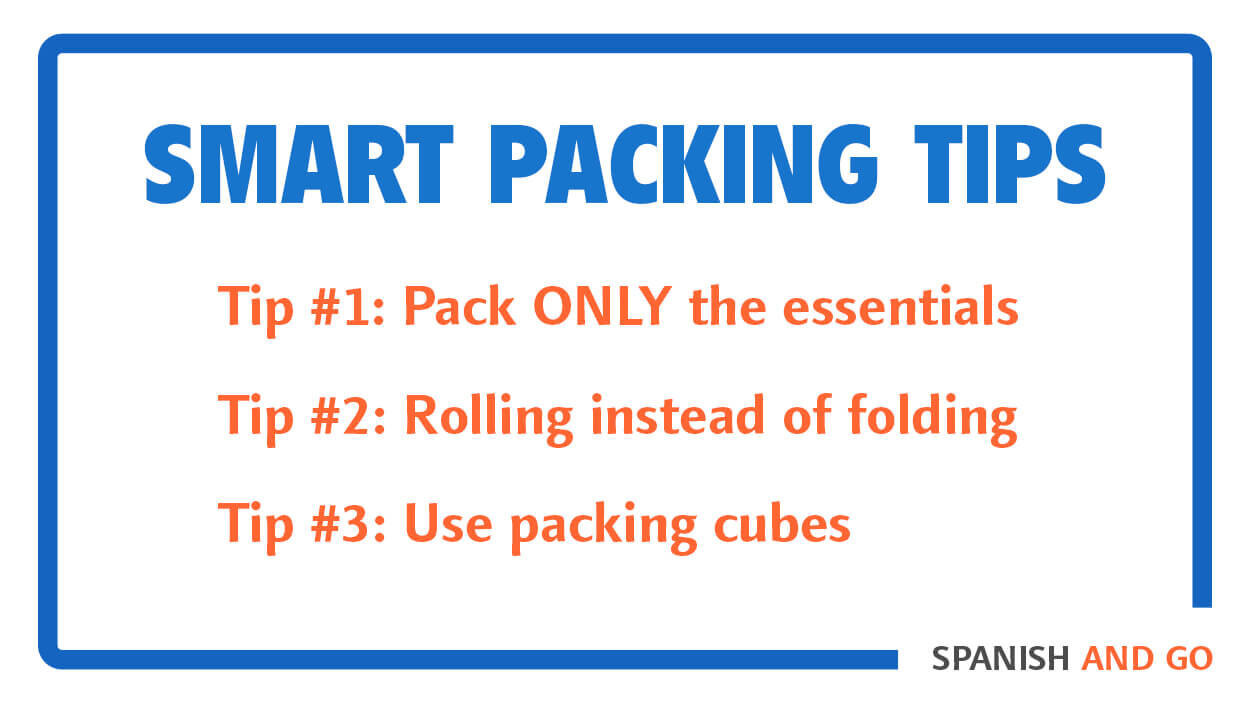 Packing for a trip can get so exciting, but always think big and travel light with only the essentials.
Packing for a trip can get so exciting, but always think big and travel light with only the essentials.
5. Essential Extras for Your Mexican Trip
- Pen: Needed for customs forms on arrival and departure.
- Reusable shopping bag: Handy for markets or unexpected purchases.
- Reusable water bottle: Reduces plastic waste and ensures hydration.
- Day pack: For carrying essentials while exploring.
6. Mexico: Safe Travel Tips for LGBTQ+ Visitors
6.1. Understanding Safety in Mexico for LGBTQ+ Tourists
Mexico is generally a welcoming destination for LGBTQ+ travelers, but levels of acceptance can vary. According to Human Rights Watch, while significant legal advancements have been made, societal attitudes are still evolving. Major cities like Mexico City, Guadalajara, and Puerto Vallarta are known for their vibrant LGBTQ+ scenes and more tolerant environments.
6.2. Areas with Greater Acceptance
Certain areas in Mexico are particularly known for their welcoming atmosphere towards LGBTQ+ individuals:
- Mexico City: Home to a thriving LGBTQ+ community with numerous bars, clubs, and cultural events. The annual Pride celebration is one of the largest in Latin America.
- Puerto Vallarta: Often referred to as the “San Francisco of Mexico,” Puerto Vallarta boasts a large LGBTQ+ population and a vibrant gay scene, especially in the Zona Romantica.
- Guadalajara: Offers a mix of traditional culture and modern LGBTQ+ acceptance, with a growing number of gay-friendly establishments.
6.3. Safety Tips for LGBTQ+ Travelers
- Stay Informed: Research local laws and customs regarding LGBTQ+ rights before traveling. Knowledge is your best defense.
- Stick to Welcoming Areas: Focus your time in known LGBTQ+-friendly areas, especially at night.
- Use Reputable Services: Book accommodations and tours through reputable companies known for their LGBTQ+ inclusivity.
- Be Aware of Public Displays of Affection: While attitudes are generally relaxed in tourist areas, be mindful of public displays of affection, especially in more conservative regions.
- Emergency Contacts: Keep a list of emergency contacts, including local LGBTQ+ organizations and embassies.
- Share Your Itinerary: Let friends or family know your travel plans and check in regularly.
- Trust Your Instincts: If a situation feels unsafe, remove yourself from it immediately.
6.4. Resources and Support
- Local LGBTQ+ Organizations: Organizations like All Out and Cuenta Conmigo offer support and resources for LGBTQ+ individuals in Mexico.
- Travel Guides: Websites like gaymexico.net provide valuable information on LGBTQ+-friendly destinations, events, and services.
According to the UCLA Williams Institute, promoting inclusive travel policies and educating local communities can significantly enhance the safety and acceptance of LGBTQ+ travelers.
7. LGBTQ+ Venues and Events in Mexico
7.1. Mexico City
Mexico City is a hub for LGBTQ+ culture, offering a wide array of venues and events.
- Zona Rosa: Known as the gayborhood, Zona Rosa features numerous gay bars, clubs, and restaurants.
- Pride Parades: Mexico City hosts one of the largest and most vibrant Pride parades in Latin America each June.
- Queer Film Festivals: Several film festivals throughout the year showcase LGBTQ+ cinema.
7.2. Puerto Vallarta
Puerto Vallarta is famous for its welcoming and lively LGBTQ+ scene.
- Zona Romantica: This area is the heart of the gay scene, with numerous bars, clubs, and beachfront venues.
- Mantamar Beach Club: A popular gay beach club known for its parties and events.
- Pride Week: Puerto Vallarta hosts a major Pride celebration each May, drawing visitors from around the world.
7.3. Guadalajara
Guadalajara offers a mix of traditional and modern LGBTQ+ culture.
- Gay Bars and Clubs: The city has a growing number of gay bars and clubs, particularly in the Chapultepec area.
- Cultural Events: Guadalajara hosts various LGBTQ+ cultural events and performances throughout the year.
8. Connecting with the LGBTQ+ Community in Mexico
8.1. Online Platforms and Social Media
- Social Media Groups: Join Facebook groups and other online communities to connect with local LGBTQ+ individuals and travelers.
- Dating Apps: Apps like Grindr and Tinder can be used to meet locals and find out about events and gatherings.
8.2. Local Meetups and Events
- Community Centers: Visit local LGBTQ+ community centers for information on events and support groups.
- Volunteer Opportunities: Volunteering with LGBTQ+ organizations is a great way to meet people and give back to the community.
8.3. Language Exchange Programs
- Language Meetups: Participate in language exchange programs to meet locals and learn Spanish.
- Cultural Exchange Events: Attend cultural exchange events to learn more about Mexican culture and connect with LGBTQ+ individuals.
9. Legal and Social Context for LGBTQ+ People in Mexico
9.1. Legal Rights
Mexico has made significant strides in LGBTQ+ rights.
- Same-Sex Marriage: Legal throughout the country since 2015, following a Supreme Court ruling.
- Adoption Rights: LGBTQ+ couples have the right to adopt in many states.
- Anti-Discrimination Laws: Protections against discrimination based on sexual orientation and gender identity exist at the federal level.
9.2. Social Attitudes
While laws are progressive, social attitudes vary across the country.
- Urban vs. Rural: Acceptance is generally higher in urban areas compared to rural regions.
- Regional Differences: Attitudes can differ significantly between states, with some being more conservative than others.
- Public Opinion: Public opinion polls show increasing support for LGBTQ+ rights, but challenges remain.
9.3. Current Issues and Challenges
Despite progress, LGBTQ+ individuals in Mexico still face challenges.
- Discrimination: Discrimination in employment, housing, and healthcare remains a concern.
- Violence: Hate crimes and violence against LGBTQ+ people continue to occur.
- Transgender Rights: Transgender individuals often face significant barriers in accessing healthcare and legal recognition.
10. Essential Mexican LGBTQ+ Travel FAQs
10.1. Is Mexico safe for LGBTQ+ tourists?
Mexico is generally safe for LGBTQ+ tourists, especially in major cities and tourist destinations like Mexico City, Puerto Vallarta, and Cancun, which have vibrant LGBTQ+ scenes and are known for their welcoming atmosphere. However, it’s always wise to stay informed about local laws and customs, stick to known LGBTQ+-friendly areas, and be aware of your surroundings.
10.2. What are the best LGBTQ+-friendly destinations in Mexico?
Some of the most popular LGBTQ+-friendly destinations in Mexico include Mexico City, known for its Zona Rosa and Pride celebrations; Puerto Vallarta, often called the “San Francisco of Mexico” with a lively gay scene; and Guadalajara, which offers a mix of traditional culture and modern LGBTQ+ acceptance.
10.3. What legal rights do LGBTQ+ people have in Mexico?
Mexico has made significant progress in LGBTQ+ rights. Same-sex marriage has been legal throughout the country since 2015, and LGBTQ+ couples have the right to adopt in many states. Additionally, there are federal anti-discrimination laws that protect against discrimination based on sexual orientation and gender identity.
10.4. How can I connect with the local LGBTQ+ community in Mexico?
You can connect with the local LGBTQ+ community in Mexico through various online platforms and social media groups, such as Facebook groups and dating apps like Grindr and Tinder. Attending local meetups, events, and visiting LGBTQ+ community centers are also great ways to connect.
10.5. What should I wear in Mexico to respect local customs?
While Mexico is generally tolerant, dressing modestly, especially in rural areas and religious sites, is recommended. In beach destinations, casual wear like shorts, t-shirts, and sandals is common. In central Mexico, dressing in layers is advisable due to fluctuating temperatures, and jeans, pants, and comfortable closed-toe shoes are typical.
10.6. Are there any specific safety precautions LGBTQ+ travelers should take in Mexico?
LGBTQ+ travelers should stay informed about local laws and customs, stick to known LGBTQ+-friendly areas, use reputable and LGBTQ+-inclusive services, be mindful of public displays of affection, and keep a list of emergency contacts, including local LGBTQ+ organizations and embassies.
10.7. What types of LGBTQ+ events are common in Mexico?
Mexico hosts a variety of LGBTQ+ events, including Pride parades in Mexico City and Puerto Vallarta, queer film festivals, cultural events, and parties at popular gay bars and clubs.
10.8. What resources are available for LGBTQ+ travelers in Mexico?
Resources for LGBTQ+ travelers in Mexico include local LGBTQ+ organizations like All Out and Cuenta Conmigo, as well as travel guides and websites like gaymexico.net, which provide information on LGBTQ+-friendly destinations, events, and services.
10.9. How do social attitudes towards LGBTQ+ people vary across Mexico?
Social attitudes towards LGBTQ+ people vary across Mexico, with acceptance generally higher in urban areas compared to rural regions. Attitudes can also differ significantly between states, with some being more conservative than others. However, public opinion polls show increasing support for LGBTQ+ rights overall.
10.10. What challenges do LGBTQ+ people still face in Mexico?
Despite progress, LGBTQ+ individuals in Mexico still face challenges, including discrimination in employment, housing, and healthcare, hate crimes and violence, and barriers in accessing healthcare and legal recognition for transgender individuals.
Mexico is an amazing place, and gaymexico.net is here to make sure your trip is as fun, safe, and informed as possible. With the right clothing choices and a bit of cultural awareness, you’ll be ready to enjoy all that Mexico has to offer.
Ready to explore Mexico? Visit gaymexico.net for detailed travel guides, LGBTQ+ event listings, and connections to the local community. Plan your adventure today and experience the best of Mexico! You can reach us at Address: 3255 Wilshire Blvd, Los Angeles, CA 90010, United States. Phone: +1 (213) 380-2177.
